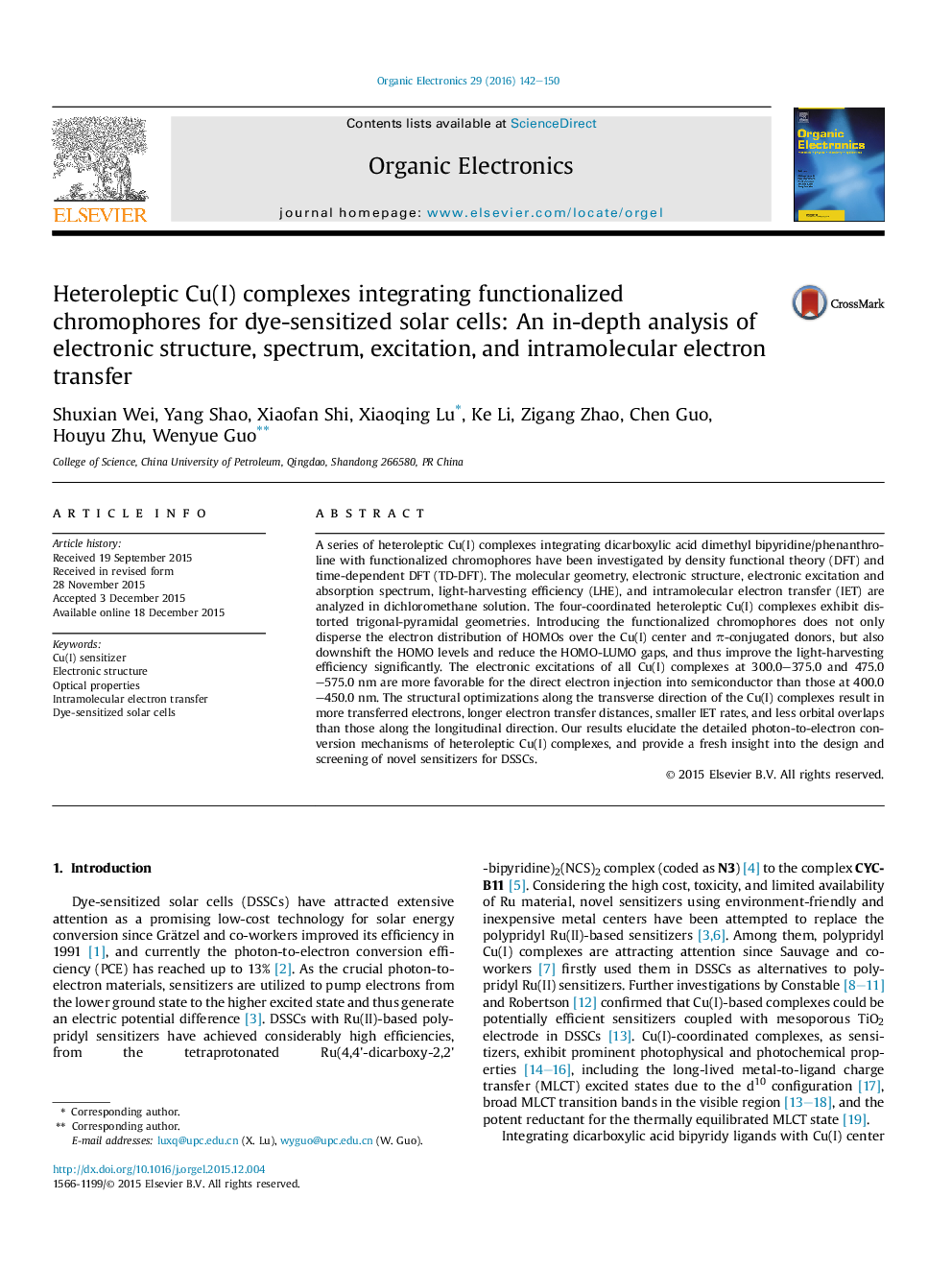| کد مقاله | کد نشریه | سال انتشار | مقاله انگلیسی | نسخه تمام متن |
|---|---|---|---|---|
| 1264274 | 1496828 | 2016 | 9 صفحه PDF | دانلود رایگان |

• Heteroleptic Cu(I) sensitizers designed for dye-sensitized solar cells.
• Convenient photo-induced intramolecular electron transfer of Cu(I) sensitizers.
• Transverse and longitudinal π-conjugation improve electronic and spectral property.
A series of heteroleptic Cu(I) complexes integrating dicarboxylic acid dimethyl bipyridine/phenanthroline with functionalized chromophores have been investigated by density functional theory (DFT) and time-dependent DFT (TD-DFT). The molecular geometry, electronic structure, electronic excitation and absorption spectrum, light-harvesting efficiency (LHE), and intramolecular electron transfer (IET) are analyzed in dichloromethane solution. The four-coordinated heteroleptic Cu(I) complexes exhibit distorted trigonal-pyramidal geometries. Introducing the functionalized chromophores does not only disperse the electron distribution of HOMOs over the Cu(I) center and π-conjugated donors, but also downshift the HOMO levels and reduce the HOMO-LUMO gaps, and thus improve the light-harvesting efficiency significantly. The electronic excitations of all Cu(I) complexes at 300.0–375.0 and 475.0–575.0 nm are more favorable for the direct electron injection into semiconductor than those at 400.0–450.0 nm. The structural optimizations along the transverse direction of the Cu(I) complexes result in more transferred electrons, longer electron transfer distances, smaller IET rates, and less orbital overlaps than those along the longitudinal direction. Our results elucidate the detailed photon-to-electron conversion mechanisms of heteroleptic Cu(I) complexes, and provide a fresh insight into the design and screening of novel sensitizers for DSSCs.
Figure optionsDownload as PowerPoint slide
Journal: Organic Electronics - Volume 29, February 2016, Pages 142–150